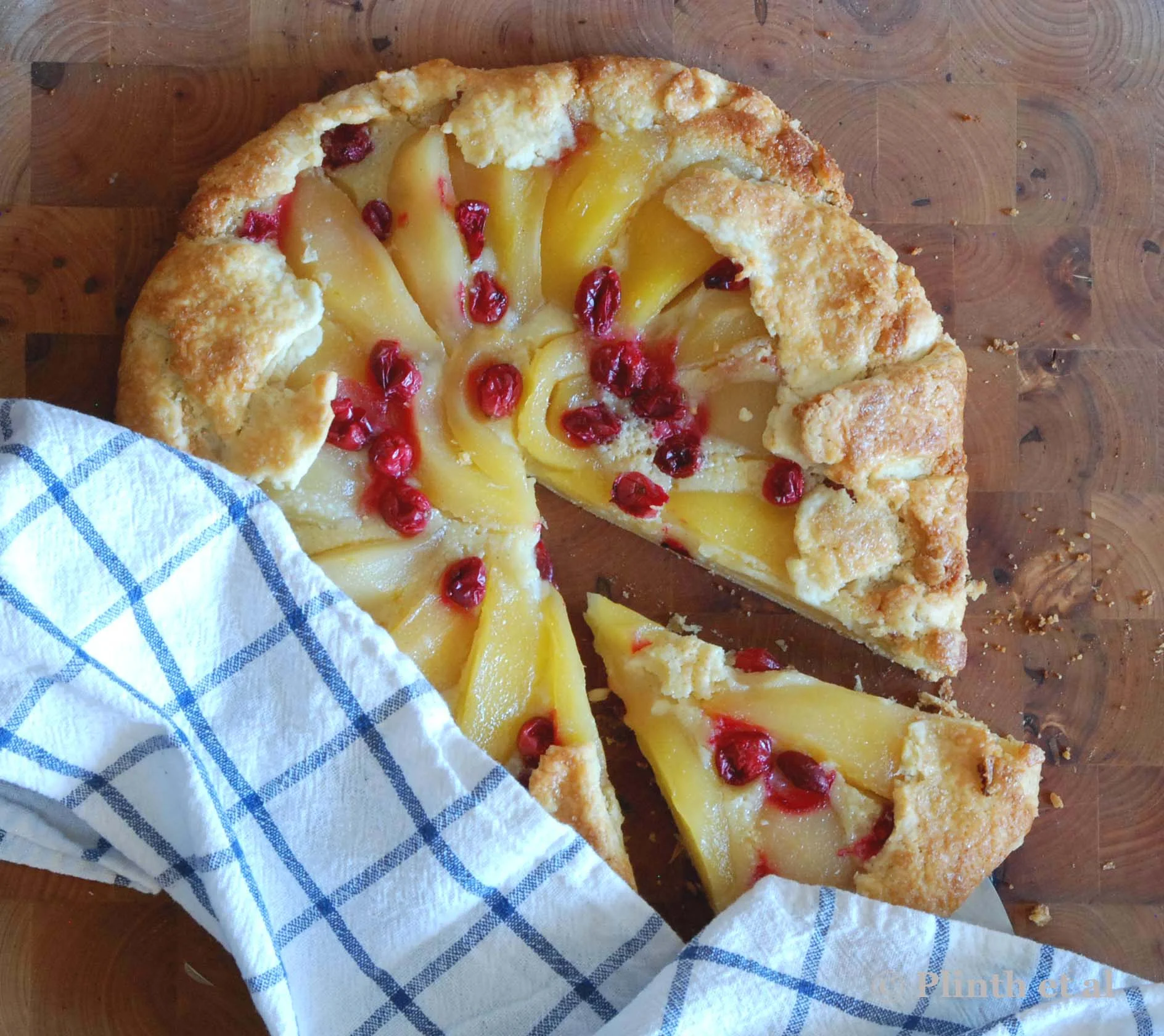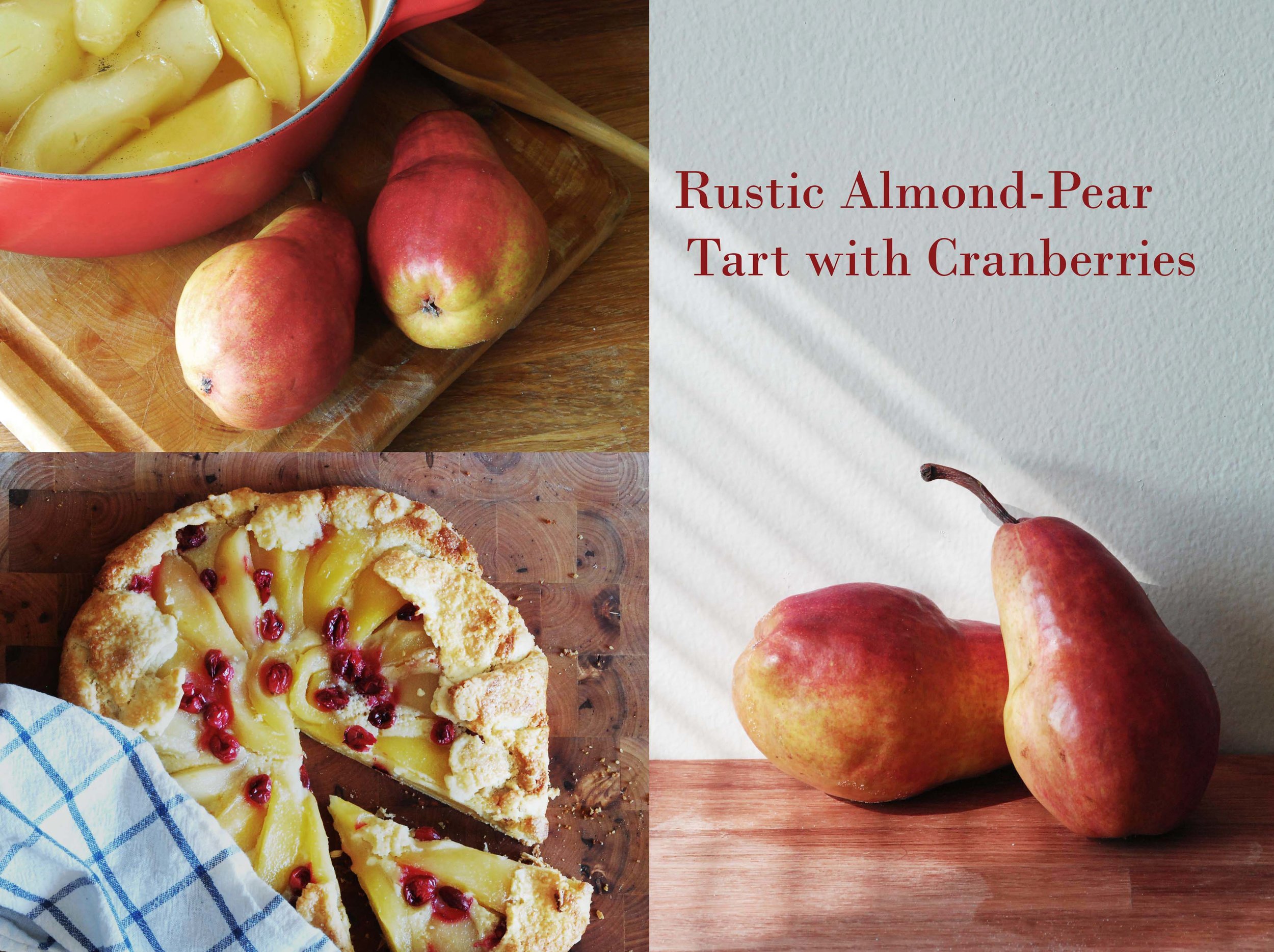Pear and Cranberry Crostata
In the coming months, we'll be featuring seasonal recipes. Gardeners are often avid cooks, given their connection to the seasons and their instinct to nurture the soil. As such, we'll be featuring seasonal recipes in the coming months. Our guest writer and food-lover, Danielle is a halfie, half French and half American, from the San Francisco Bay Area. Her family is and always has been food obsessed and passed their culinary love down to her. She believes the best part of a meal is sharing it, and thus enjoys cooking for and with friends and family. Danielle likes preparing meals that remind you of the seasons and gets excited about each new season's defining bounty. The French part of her laments the difficulty of finding a good baguette and a proper stinky cheese.
Fall is my favorite season. I can’t put my finger on it, but everything feels right when I go outside on a crisp autumn day, hear the crunch of leaves on the ground, and see trees bursting with red and orange brightness. As with any season, part of the pleasure and excitement of welcoming the season’s arrival involves daydreaming about what to cook with nature’s goodies. I associate fall with celery root (celeriac), crisp apples, and pears. And of course, fall would not be fall without cranberries and butternut squash!
This week I’ll be posting some of my favorite fall recipes, and I hope you enjoy them too. I love combining apples with celery root and fennel. Apples go surprisingly well in salads, especially when paired with celery root and the slight anise flavor of shaved fennel. To make the salad a bit heartier, I like to add blue cheese and arugula. The mix of textures seems just right. Leeks are another one of my favorite vegetables—I practically grew up on them. I love combining them with roasted butternut squash, whose rich flavor goes very well with the sharpness of the goat cheese. Pear desserts are a fall classic, and the sweetness pairs perfectly with cranberries.
Rustic Almond-Pear Tart with Cranberries
Adapted from Joanne Chang’s Roasted Pear and Cranberry Tart
Ingredients
To Poach the Pears
- 5 red pears, quartered, cored, and peeled
- 6 cups of water
- 2.5 cups of sugar
- 1 vanilla bean (I used 1 tbsp. of vanilla paste)
- Dissolve the sugar in the water on medium heat. Cut the vanilla bean lengthwise and scrape out the contents with the tip of a sharp knife. Add the paste to the water-sugar mixture, along with the empty bean. When the sugar is dissolved, add the quartered pears and simmer for 20 minutes, or until the pears are tender. The longer you leave the pears in the poaching liquid, the more flavorful they will be. I left them in the liquid for an additional hour after they were ready.
- Once ready to put together the tart, remove the pears from the liquid and set aside so that they dry. Reduce the poaching liquid and keep for any sort of desert/cocktail creation. J
Notes: For additional information on poaching pears, you should read David Lebovitz’s tutorial here.
For the Tart Dough
- 1 cup flour
- 2 tsp. sugar
- ½ tsp. kosher salt
- 9 tbsp. cold unsalted butter, cut into 8 pieces
- 1 egg yolk
- 2 tbsp. cold milk
- Additional flour for sprinkling
- Combine the flour, sugar, and salt into a food processor set up with the metallic blade. (The original recipe called for an electric mixer with the paddle attachment, but I found that the food processor works well too.) Pulse the mixture a few times to ensure that it is well combined.
- Add the butter, bit by bit, while the food processor is on, and stop as soon as the butter is in pecan-sized lumps throughout.
- Whisk together the egg yolk and the milk in a separate bowl, and then add to the food processor. Mix for about 30 seconds, or until the dough barely comes together. The mixture should look more like crumbs than dough.
- Pour the contents out onto a floured surface and gather the dough into a tight mound. If you see large chunks of butter, use your palm to smear to smear the dough. To do this, put your palm at the top of the dough mound and slide your palm down the side and along the work surface. Do this only one or twice, as you want to be careful of overworking the dough. Work the dough into a disk of about 1” thick and wrap in saran wrap, and refrigerate for at least 1 hour.
For the Tart Filling
- ½ stick (1/4 cup) of unsalted butter, at room temperature
- ¼ cup sugar
- 1/3 cup blanched whole almonds, ground to a powder, or ½ cup almond flour
- 1 egg
- 2 tsp. flour
- 1/8 tsp. vanilla extract
- Pinch of kosher salt
- With the food processor, cream the butter and sugar for 1 to 2 minutes until light. Add the almond powder (or ground almonds) and mix for about 1 minute. Make sure to scrape down the sides of the bowl from time to time.
- Add the egg, flour, vanilla, and mix until combined.
Assembling the tart
- 1 egg
- Flour
- Water
- Raw turbinado sugar (about 1 – 2 tbsps.)
- Preheat oven to 350 degrees.
- Line a baking sheet with parchment paper (or, if you don’t have that on hand, you can use aluminum foil that you’ve buttered slightly).
- Take the dough out of the refrigerator and let sit for about 5-10 minutes. Roll out carefully on a floured surface. The dough should be about ¼” thick. Carefully transpose the rolled out dough to the baking sheet.
- Scoop the frangipane into the center of the dough, and spread out evenly. Make sure to leave a border along the edge of the dough at least 3” thick. The frangipane will leak out during cooking if the border is not wide enough to ensure that it has been completely sealed in by the dough.
- Place the quartered pears in the frangipane, making sure that they are resting entirely on the frangipane and not the dough. The pears should be placed such that the larger end is on the exterior edge of the tart and the smaller ends are facing inwards towards the center of the tart. Make sure to pack the pears tightly, lining them up closely to each other. Once you have completed laying out the pears in a circle, you can place a pretty pear design in the center to cover up the gap (if there is one).
- Sprinkle the cranberries among the pears.
- Begin by folding one portion of the rim of the dough up and over the pears. Continue in a circle, folding a new portion of dough over the previously folded portion. This should create about 6 -8 pleats of dough folded over the fruit.
- In a bowl, add the egg and about 1 tbsp of water. Mix well. With a brush, coat the dough with the mixture. This mixture (eggwash) will ensure that the dough becomes a nice golden color during baking. Now sprinkle the sugar on top of the dough covered by the eggwash.
- Refrigerate the tart for about 1 hour.
- Bake in the oven at 350 for about 1 hour, or until the pastry is golden brown. Once done, let cool before transferring to a serving dish.








